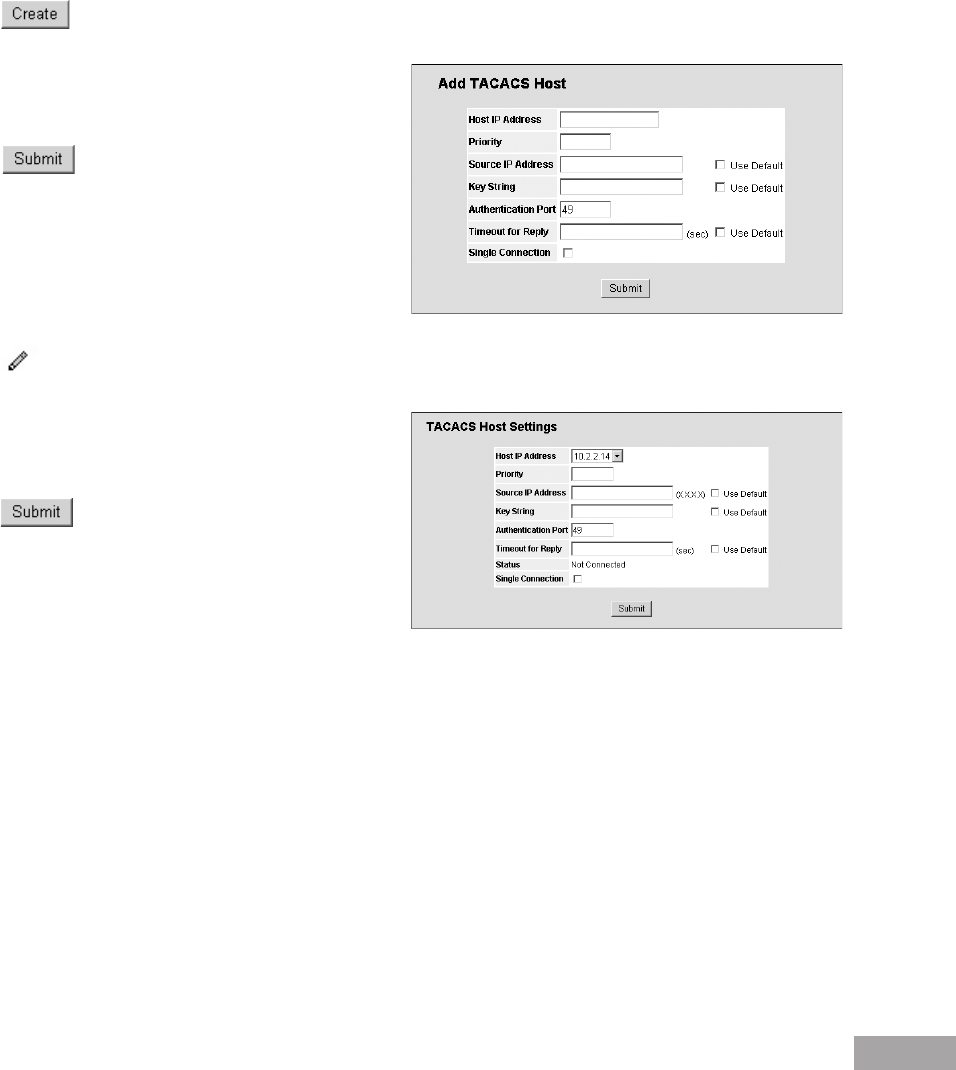
28
29
Timeout for Reply — Denes the amount of time in seconds that passes before the connection between the device and
the TACACS+ times out. The eld range is 1-1000 seconds.
Single Connection — Maintains a single open connection between the device and the TACACS+ server. The possible
eld values are:
– Checked — Enables a single connection.
– Unchecked — Disables a single connection.
Status — Indicates the connection status between the device and the TACACS+ server. The possible eld values are:
– Connected — Indicates there is currently a connection between the device and the TACACS+ server.
– Not Connected — Indicates there is not currently a connection between the device and the TACACS+ server.
Remove — Removes TACACS+ server. The possible eld values are:
– Checked — Removes the selected TACACS+ server.
– Unchecked — Maintains the TACACS+ servers.
2. Click . The Add TACACS+ Host Page opens:
Figure 34: Add TACACS+ Host Page
3. Dene the elds.
4. Click . The TACACS+ server is dened, and
the device is updated.
To modify the TACACS+ server settings:
1. Click Security > Management Security >Authentica-
tion > TACACS+. The TACACS+ Page opens.
2. Select TACACS+ server entry.
3. Click . The TACACS+ Host Settings Page opens.
Figure 35: TACACS+ Host Settings Page
4. Modify the elds.
5. Click . The TACACS+ host settings are saved,
and the device is updated.
5.1.1.6 Dening RADIUS Server Settings
Remote Authorization Dial-In User Service (RADIUS) servers provide additional security for networks. RADIUS servers
provide a centralized authentication method for web access.
The default parameters are user-dened, and are applied to newly dened RADIUS servers. If new default parameters are
not dened, the system default values are applied to newly dened RADIUS servers.
To congure RADIUS servers:
1. Click System > Management Security > Authentication > Radius. The Radius Page opens:


















